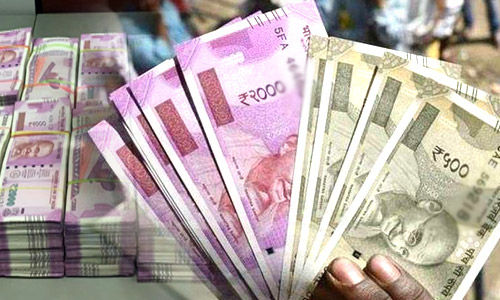The Modi government introduced the Pradhan Mantri Mudra Yojana (PMMY) in 2015 to fund unfunded small entrepreneurs in the country. The scheme was meant to ensure funds never come up as a hurdle before good and powerful ideas and enterprises. These collateral free loans were meant for small and medium enterprises (SMEs). To begin with, the loan size ranged from Rs 50,000 to Rs 10 lakh, while the government this year announced to raise the upper slab to Rs 50 lakh. Collateral free loans were one of the major poll promises in the BJP manifesto in the run-up to the 2019 elections. This year, the Centre has set out to increase the number of Mudra beneficiaries from 19 crore to 30 crore.
Backing entrepreneurs with timely funding is critical for the success of any enterprise and hence should be welcome. But that should not come at the cost of another potential bad loan shock for the economy which it seems to be headed towards.
The Reserve Bank of India Tuesday red-flagged the rising bad debt level in Mudra loans. Deputy Governor MK Jain expressed concern about the bad debts due to Mudra loans. This was not the first time a central bank official has warned against the rising bad debts due to Mudra loans. Earlier, RBI Governor Shaktikanta Das had sounded caution against the high debts in collateral free loans. There are three categories of loans under Mudra: Shishu, covering loans up to Rs 50,000; Kishor, covering loans above Rs 50,000 and up to Rs 5 lakh; and Tarun, covering loans above Rs 5 lakh and up to Rs 10 lakh. NPAs in Shishu amounted to 12.39 per cent of the loans, and in the Kishor category, they were about 10.19 per cent, at the end of fiscal 2019, RBI data showed.
According to media reports, more than Rs 7.28 lakh crore has been disbursed to 3.27 crore marginal and small entrepreneurs including SCs and STs under the Mudra in the last three financial years. Between April 2019 and October 25, 2019, Rs 1,25,089 crore loans were sanctioned to 240.03 lakh borrowers. Of this, 68 per cent (163.02 lakh) were women borrowers, and 19 per cent (163.02 lakh) new entrepreneurs. 129.70 lakh ST/OBC borrowers constituted 54 percent of the total.
The massive push through Mudra may have lifted many beneficiaries out of poverty, but the rising non-performing assets (NPAs) among Mudra borrowers cannot be overlooked. Banks must assess repayment capacity of borrowers at the appraisal stage and monitor the life cycle of loans much more closely. Data showed that NPA ratio as a percentage of Mudra loans was at 2.68 per cent in 2018-19, up 16 basis points from 2.52 per cent in the previous year. Mudra loan NPAs were at 2.89 per cent in 2016-17. Of the 182.60 million MUDRA loans sanctioned, 3.63 million accounts defaulted as on 31 March. The total value of the NPAs held by PSBs under Mudra was Rs 7277.31 in February, 2018 which jumped to Rs 16,481.45 crore as of March 31, 2019 –more than 100 per cent raise. Some 30.57 lakh Mudra accounts have been declared NPAs, up from 17.99 lakh in March 31, 2018. Although the value of NPAs is not very high in comparison to the total value of all loans issued under the Mudra scheme, it is nonetheless steadily increasing. The banking system is struggling with Rs 10 lakh crore NPAs, any addition to it will wreak the financial system. It is high time the government heeded the RBI warning and ask banks to disburse the collateral free loans only after due diligence. The banks also should monitor the end use of these loans. Collateral free loans, no matter how good the intent, is a high risk proposition. The borrowers should not be allowed to use it for consumption purposes.




